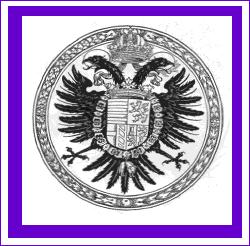
Historical Dates for Austria-Hungary
The following are excerpts from communication with Catherine, nee Hubert, Hicks:
"The Hummels were Schwabians from SW. Germany. Also called Allamanns. The region they occupied embraced Western Bavaria, Wuertemberg, Baden and Alsace...and a great part of Switzerland."
"Nicholas Hummel spoke of his grandfather," [Peter Hummel], "as having come to the Hungarian area in the late 1600s and mention was made of the 30 Year War. They also mention the cholera epidemic during these years. They also spoke of the Turkish occupation."
Note: Nicholas was Catherine's mother's brother.
Dates Important to the Banat Area in Austria-Hungary and German Migration:
Banat was a term originally used for several military frontiers provinces of Hungary and Croatia because the governors held the title of ban.
The area around Temesvar in which we are interested in the Goetz-Hummel history belonged to the Hungarians in 1526.
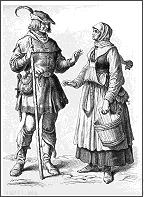
German Peasants 16th Century
1526
29 Aug 1526 the army of Sultan Suleiman of the Ottoman Empire inflicted a decisive defeat on the Hungarian forces at Mohacs. The youthful King Louis II of Hungary and Bohemia, son of Vladislave II of Bohemia , fell in battle.
10 Nov 1526 John Zapolya [Janos Zapolyai],who was voivode of Transylvania and claimant to the throne of the Kingdom of Hunbary, proclaimed himself as king by the diet at Szekesfehervar and was crown the following day, 11 Nov., King of Poland.
Habsburgs under Archduke Ferdinand, contested this election and claimed Hungary for his wife, Anna lineage as his marriage toher which he felt gave them their own rightful inheritance, the crown of Hungary . Ferdomamd declared himself King in Dec. of 1926...
Prince Savoy freed Banat from Turkish domination.
Rebuilding was done by Imperial General Count Claudius Floriumund Mercy who would be known as "Father of Banat"
1527
July 1527, an army of German mercenaries invaded Hungary while John I Zapolya was busy with a revolut in the south... Hurriedly redeployed his troops his troops
27 Zapolya and his toops suffered a bloody lost near Tokaj on 27 Sept 1527...
1529
With the help of the Sultan, John I defeated Ferdinand's army.
The Ottomoans saw the weakness of John I and slowly invaded Hungary and without any assistants from the west John I surrendered the crown to Sultan Sulayman I, whom in turn confirmed John I as king. John I remained under his the Sultan's protection and will.
1540
18 July 1540 - Birth of the future John II Zapolya
There was an agreement [Treaty of Varad in 1538] made by King John I Zapolya that the crown would go to the Habsburgs, however, a son was born 18 July 1540, which was 4 days before his death (22 July 1540) and the agreement was void by John I, and, this created and new dispute between the Zapolyas and the Hapsburgs.
22 July 1540 - Death of King John Zapoloya I
Infant John II Zapolya was crown king of Hungary.
1568
John II passed the Edict of Torda, first decree of religious freedom in the modern history of Europe and supported the establishment of the Unitarian Church in Transylvania.
1570
John II Sigismund Zapolya abdicated as king of Hungary and became first Royal Prince [Furst] of Transylvania (1570-1571)
Hungary was divided between Turkey and Austria who's rulers, the [Habsburgs , were then the Emp. of the Holy Roman Empire.
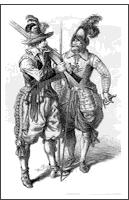
Musketeer and Pikeman in the Thirty Years' War
1618-1648
Thirty Years' War
1661-1664
War against the Turks
1662
The Transylavinan Prince Michael II Apafi, son of Michael Apafi (Turkish Governor) abdicated.
1668
German Empire joined the War of Devolution against Louis XIV of France.
Wars of Succession in the Palatinate
1668-1697
War of the League of Augsburg against Louis XIV
1674
Dutch War who had sided with Louis XIV.
1677-1687
Kukruc Revolt -Hungarians revolt
1682
Liberation of Hungary
1683, 1699
Pace of Karlowitz-Turks relinquished all claims on Hungary
Hungarians disliked the Habsburg rule
1692
Hanover became an electorate
1699
Habsburgs took Hungary
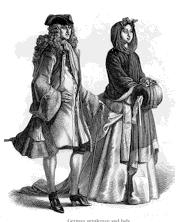
German Gentleman and Lady - Begining of the 18th Century
1700
*Germans settled in the following districts:
Ofen (Budapest) Districts
Raab District which was north of Lake Paltten
Funfkirchen (Pecs) area between the Danube and the Drava
Baeska
Banat which include
(1) Temesvar area
(2) Werschetz (Vrsae)
+Banat boundaries were:
Danbue on the south
Marosch R. on the north
Thiesse R. on the west
Carpathian foothills on the east.
1701-1711
Transylvanian Prince Francis Rakozi ruled area again for these unsettled times
1701
Prussian Elector Frederick became King "in" Prussia Frederick III.
War of Spanish Succession.
1703-1711
Revolt of Hungarians under Francis II Rakoczi. Called the War of Independence
1705-1711
Joseph I Habsburg , son of Leopold ruled
1711
Parts of Hungary was regained by Habsburgs and placed under Austria's rule.
1711-1740
Charles VI, son of Leopold I, House of Habsburg
1712
Sathmar and Salai settled with Catholic peasant from Southern Wu..*
1714-1718
War of the Turks with Venice
1718, Aug. 2
Quadruple Alliance for the maintenance of the treaty of Utrecht between France, Britain, the Emperor, (1719) the Republic of Holland.
1718-1918
Banat was part of the Austrian Empire.+
In German Temesvar was called Temeschburg
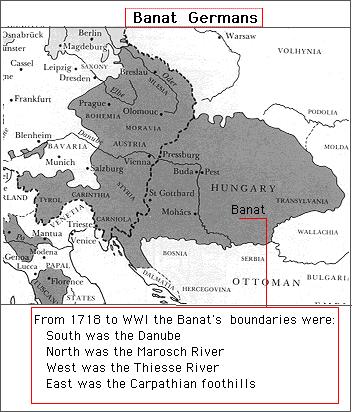
Germans who migrated to the Banat area were to be known as Banat-Germans who were part of the Danube Germans who settled in different part of Austria-Hungary which later became Hungary, Rumania and Yugoslavia . They isolated themselves from outside influences and held their German language, culture and traidtions.
1722
Lt. Colonel Johann Freherr von Harrucker was awarded 1800 square miles of land north of Marosch and brought in 150 German families who received a generous charter from him
1722-1726
15,000 settlers were allowed to migrated to the Banat area. There were 46 German villages. They were in these areas:
1) around the Fortress of Arad were:
Perjamosch
Deutch-Sankt-Peter
Guttenbrunn
Lippa
2) Danube boundary with the following fortresses:
Pantschowa
Kula
Neu-Palanka
Mahadia
The cities were:
Werschetz
Weisskirchen
The villages were:
Freudenthal
Jasenows
Kudritz
Langenfeld
Landerdorf
Neu-Modowa
Muehlenbach
Ploschitz
Rebenberg
Saalhausen
Suchenthal
3) Central Banat was around the Capital city and Fortress Temesvar.
Cities were:
Temesvar [Temeschburg, Timesora]
Grossbetshkerek
Lugosch
Rekasch
Villages were:
Jahrmarkt
Bruckenau
Freidrof
Ulmbach
Tschakowa
Wojtek
Detta
Denta
On the outskirts of this area were:
Flatschet
Karansebesch
1723
Archduchess Maria Theresa was declared the sole heir of the House of Habsburg by the Pragmatic Sanction of 1713
1733-1735
Wars of Polish Succession
Lorraine occupied by French
1736
60,000 Turks pillaged the region
1736-1739
Unsuccessful war with Turks
1737
Sackelhausen was founded by Swabian settlers
About this time, some 4,000 Germans were deported to the Banat area for penal purposes.*
1738
Cholera and plague ran rampant in this area.
1738, Nov. 18
Treaty of Vienna:
(1) Stanislas of Poland made renunciation of Polish throne; received as compensation the duchies of Lorraine and Bar which upon his death would resolved upon France;
(2) Duke of Lorraine, Francis Stephen, received an indemnification in Tuscany and filled the throne that had became vacant;
(3) Austria ceded Naples and Sicily...;
(4) France guaranteed the Pragmatic Sanction
1740-1786
Frederick the Great ruled Prussia
1740, Oct.
Death of Charles VI, the male line of the Habsburgs became extinct.
1740-1748
War of the Austrian Succession
1740-1742
First Silesian War: Family note: Judy A. Remmick-Hubert's ancestor, Gen. von der Trenck died from wounds suffered in this war.
Prussian occupation of Silesia.
Prussians captured Glogau in Silesia
1740-1780
Archduches Maria Theresa, daughter of Charles VI ruled Austria, began to rule
1741
France and Bavarian armies invaded Austria and Bohemia. Took Prague
Charles Albert was elected Emp. in Frankfurt as Charles VII.
France, Spain, Bavaria and Saxony invaded Austria. Maria Theresa fled to Vienna with Joseph, her son.
1742
1742, June and July
Treaty of Breslau and Berlin between Austria and Prussia:
(1) Austria ceded to Prussia upper and lower Silesia and the county of Glatz
1742
George II defeated the French
Austria had success in driving out the Allies in Bohemia
1742-45
Emperor Charles VII, son of Maximilian Emanuel Elector of Bavaria ruled Austria
1743
Austria had success in driving out the Allies in Bavaria
June 27th, Charles VIII was a refugee in Frankfurt
Austria had success in Sardian and Saxony
1744-1745
Second Silesian War: Judy A. Remmick-Hubert's ancestor Baron Frederick von der Trenck was Frederick "the Great" of Prussia's aid-de-camp and courier while his Austrian cousin Franz von der Trenck with his pandors fought for Empress Marie Theresa.
1745, Jan.
Charles VII died
House of Lorraine-Tuscany acceded to Habsburgs
Treaty of Dresden-concluded differences between Prussia and Austria
Dec. 5-Treaty of Dresden-Frederick II of Prussia recognized Francis I
1747
Security in the area was re-established.+
What was called "The Second Schabezug" [Second Schwabian Migration ] began.+
1755
Harrucker's son continued the settlement program of Germans in Banat.
22 communities had taken hold and many market towns were predominately German
1756-1763
Third Silesian War also known as the Seven Year War
1756
Frederick the Great invaded Saxony and defeat Austrians at Lobositiz
1757
Austrians and the Emp. declared war on Frederick the Great.
1760
Swabian numbering 30,000 migrated to this area.*
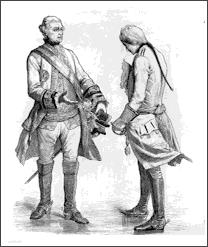
Austrian General and Officer 1760 - 1775
1763-4
Feb. 15, 1763-Peace of Hubertusburg
(1) Prussia promised to vote for Joseph at the election of the King of Rome
(2) Saxony restored
(3) Ratification of treaties of Breslau and Berlin and of Dreseden
(4) Prussia kept Silesia
Empress Maria Thersa, House of Habsburg, invited all discharged and non-commissioned officers to settle in Banat; this included wounded soldiers. + The Commissioners recruited peopled from
Pfalzer [Palatinate]
Schwabs
Franks
Alsacisans
Lorrainers
few French
2,500 came from Alsace, Lorraine and Trier.* This was called "Second Theresian" Migr. +.
Settlements was said to have inspired artists
1765
Joseph II, Emperor of Austrian lands co-regent only with his mother Maria Theresa, until 1780 and without much power.
1766
Stanislas died and Lorraine and Bar was resolved by France.
1777
There were 43,201 Germans; 181,639 Rumanians, 78,780 Serbs known to live in this area plus Hungarians, Bulgarians, Croatians, Jews, Gypsies, etc. etc. .
House of Wittelsbach under the rule of Charles Theodore [Karl], Elector of Palatinate, was legal heir of the Bavarian lands
Saxony became allies of Prussia
1778-1779
War of the Bavarian Succession
1779
Treaty of Teschen-Austria retained only the district of the Inn.
1780-1790
Joseph II ruled
Bohemians arrived in Banat
1781
Dispute between Joseph II and the Dutch
1782
Third Wave of Migration.
The following villages were started:
Lowrin
Sankt Andreas
Gertianosch
Nitzkydorf
Orzydorf
Traunau
Morawitza
Darowa
Bakowa
Ebendorf
Moritzfeld
Freudenthal
Liebling
1785, July
League of the German Princes-Opposition to Joseph II's reforms in the Austrian Netherlands and in Hungary
1788
Turkish War and 134 villages were destroyed. Advanced almost to Temesvar.
1789-1815
French Revolutionary Period
1790-1782
Leopold II ruled as Emperor
Leopold II conceded a treaty with Turks in order to procure more favorable conditions
1791, July 14
Storm of the Bastille in Paris
1796
French invaded Upper Rhine in Germany. And the French would soon occupy Rhine valley,Wu., Franconia and Bavaria.
1799-1815
Napoleonic Period
1799-1804
Napoleon becomes Consulate of France
1800
Renewal of the French campaign against Austria
1804-1814 (1815)
Napoleon I became Emperor of the French
1804-1835
Emperor Francis I ruled Austria and Holy Roman Empire
1805-1806
Napoleonic Wars against Austria
1806
The Holy Roman Empire was formally abolished by Napoleon of France who had been victor from France to Russia.
Emp. Francis I lost title and became just King of Austria
1806-1807
French War against Prussia and Russia
1810, April
Napoleon's marriage to Archduchess Marie Louise, daughter of Emperor Francis I of Austria
1812
French Invasion of Russia
Oct.-Nov., Napoleon's hasty retreat from Russia
1812-1815
Wars of Liberation with Allies against Napoleon
1813, Aug. 12
Austrian declared war on France
1814, March 31
Allies in Paris
1814, May 30,
First Treaty of Paris
1835-1848
Emperor Ferdinand I, son of Francis I , ruled Austria and Holy Roman Empire; abdicated 1848. Allowed Metternich to continue his control.
1815
Hundred Days:
March 1-Landing of Napoleon at Cannes
June 18-Battle of Waterloo
June 22-Abdication of Napoleon
Sept. 26 -Signing of the Holy Alliance
1848
Francis I abdicated.
1848-1916
Emperor Francis Joseph, nephew of Ferdinand I ruled
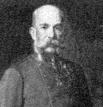
Francis Joseph, Emperor of Austira from 1848 to 1916
1848
Revolution
"Bogaroscher Schabenpetition" -Germans expressed their desire to be put under the Kaiser and to have a German Count assigned to them. This did not happen.+
The Revolutionists were crushed at the gate of the Temesvar Fortress along with the Hungarian Crown+
Between Danube and Drava additional Schwabians migrated from the Black Forest and Wu, also from eastern Styria and Rhenish Hesse, together with groups from Palatinate
1849 Aug.
Hungarian Independence crushed by the Habsburgs with the help of Nicholas I of Russia
1859
Wallachia and Moldavia were united.
1881
Dual Monarchy for Hungary which included Banat
1866-1881
Karl Eitel Friedrich of Hohenzollern-Sigmaringen was elected ruler of Romania by the assemblies of Moldavia and Wallachia. He was invested in Constantinopel by the Sultans, who granted him the right to maintain and army of 30,000 men. The German price's position was extremely difficult during the Franco-German War, because the Romanians were so strongly pro-French.
1867
Reconstructing of the Austrian Empire as Aust.-Hung..+
Banat became part of Hungary.+
1881-1914
King Carol [Karl] I ruled Romania
1896
1000th Anniversary of Magyar Conquest
1914-1927
King Ferdinand I, nephew of Carol I ruled Romania.
1916-1918
Emperor Charles I, grand-nephew of Francis Joseph ruled
1918
Austria became a Republic
1919
Banat was divided between Romania and newly created Yugoslavia.*
Banat became part of Romania.
Temosvar became Timisora
1920-1928
President Michael Hainish govern Austria

Austrian President Michael Hainisch 1920 to 1928
1927-1930
Michael (Mihai) , Grandson of Ferdinand I ruled Romania.
1930-1940
Carol II, son of Ferdinand and father of Michael ruled Romania.
1940-1947
King Michael ruled Romania.
1948
Romania became part of the People's Republic
NOTES:
*Notes from Hermann Schrieber's book, Teuton and Slav. p. 256 ...Chapter of Official Colonization
+Notes from The Banat Germans by Nicolaus Engelmann (Translated by John Michels)
Web Sites for Additional Information:
Banat Sites:
#FEEFHS: http://feefhs.org/maps/ah/ah-banat.html
1. History by Sue Clarkson: http://www.feefhs.org/banat/bhistory.html




